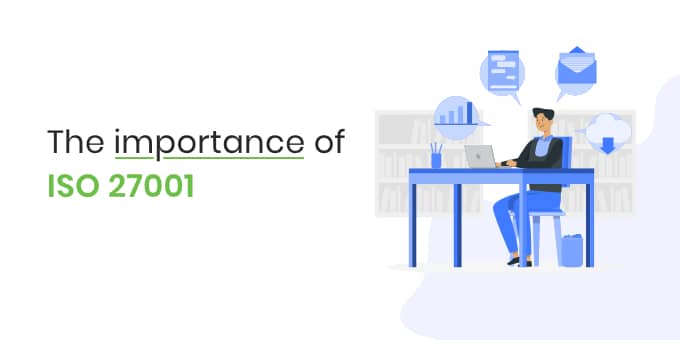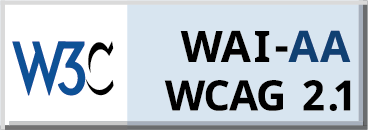Information security holds a central position in the smooth and profitable operation of any organisation. Preventing data breaches are crucial to safeguard customer data and maintain trust. How would a company know if they are really safe and measure up to the required standards of security? The answer is ISO 27001.
The ISO 27001 certification is for organisations processing private data that may or may not be deemed as personal. This was previously known as the ISO/IEC 27001:2005. This is a required threshold for information security management systems or an ISMS.
The ISMS entails a framework of policies and procedures or a system that combines all legal, physical and technical controls that help in information risk management.
This is one-of-its-kind, leading international standard and certification for information security, ISO 27001. This overlaps with about 75-80% of the EU GDPR requirements as well. It can be used as a reference framework to support GDPR compliance. The aspects concerning the use and collection of personal data within the GDPR and ISO 27001 are quite similar.
The ISO 27001 looks over the following in more detail as compared to the GDPR:
- Company security policy
- Asset management
- Physical and environmental security
- Access control
- Security incident management
- Compliance
If you would like to learn more about the GDPR and the tools that you can use for compliance.
ISO/IEC 27001, developed by the British Standards Association, is the ultimate international standard in information security management systems (ISMS) and is essential to protect against the ominous prospect of cybercrime and hacking attacks.
ISO 27001 ISMS is a global standard that every organisation should aspire to. Having it sends out a strong message to customers, suppliers, and regulators that there is an organisation aligned with the very best practices in protecting critical and private information assets.
Team objectives regarding information security
Incorporate risk documents
Bear in mind that there is no single recognized method of implementation of ISO 27001. The preferred approach is that of continually focusing on improving management system standards.
Organisations are expected to review and improve their management standard, policies, and procedures and ensure that there is in place an effective ISMS as well as demonstrate that requisite security controls have been implemented. Using a process-driven approach is the one preferred by the ISO 27001 and gives an element of flexibility depending on the scope of the organisation’s framework taking into account various devices such as mobiles.
When commencing an overhaul of security systems and requirements, it is important to identify the measures of security required for the business to function. ISO 27001 permits businesses to generously define their risks and management procedures.
Best practice approach to data security and risk management
Implementing ISO 27001 should begin with the appointment of a project manager, who will undertake to implement the project by defining the objectives. The manager has to be fully supportive of the project, and the first goal is to ensure that there are sufficient resources available to implement the ISMS at every stage of the project plan.
There are six integral aspects of an ISO 27001 risk assessment, starting with the establishment of a corporate risk assessment structure.
- Identify risks that would affect the organisation
- Evaluate and analyse these risks
- Examine risk management options
- Incorporate a risk-avoidance plan
- Training across the organisation
- Certification from an accredited certification authority
Establishing a risk assessment framework (ISO 27001)
With ISO 27001, it is crucial to use a trusted method to define and establish a comprehensive risk assessment. The method will identify threats and vulnerable areas that will have an impact on the organisation. These risks and dangers need to be clarified from the outset for the project to be successful.
Decreasing any identified risks is the purpose of the project, and here are some ways to do this:
- Firstly, Apply appropriate security controls
- Secondly, Transfer the risk away from the organisation (e.g. to an insurance company)
- Thirdly, Cease all activity
- Fourthly, Consent to the risk, depending on mitigating costs
- Lastly, Risk treatment document
This document should be an organisation’s action plan on how it will deal with implementing the necessary controls, including who is dealing with the controls, effectiveness of technologies and attitudes within the organisations. Which leads to training and awareness implementations.
✓ Training
It is essential that the entire workforce is aware of the new policies and procedures being implemented. Any sort of training should be periodic and in line with changing and updated ISO 27001 compliance regulations. This will help prevent organisations reach their goal to prevent cyber attacks
✓ Toolkits
Establishing a security framework will involve many aspects including a diagnosis of all systems, a regulatory audit, full reviews of security policies and procedures, work procedures, devices and appliances, and workforce awareness. The use of toolkits will ensure a strong and robust security system. Tools such as:
- Online self-assessments
- Incident reporting
- Tools that allow businesses to measure performance against data security standards and demonstrate best practice data security and the correct handling of personal information.
Toolkits need to incorporate many resources, including the technology of the organisation and also company processes and people.
✓ Technology
Protect data with up to date software solutions. Some robust and innovative developments in data security such as encryption software and virus protection will need implementation. However, nothing is 100% flawless so ongoing and vigilant scanning and monitoring for new threats will need to be applied. Regular backups, vulnerability assessments, and penetration testing will strengthen reasonably good protection to a much higher level.
✓ Processes
An organisation requires by the GDPR to know and understand the data it holds. Keeping a log and having a responsible person within the organisation to response together with a policy on preventing breaches will see as a responsible data security strategy.
Regular data risk assessments to identify risks and dangers such as online security, physical risks such as unlocked desks and power cuts. Identify weak areas and plan accordingly.
✓ People
Human error is responsible for most devastating mistakes, for example, the loss or theft of a company device such as a laptop, mobile or USB stick containing private and sensitive information will be hugely detrimental not only to the organisation but to the individual whose data is now in the wrong hands.
Huge penalties will direct against the organisation rather than the individual who was at fault, and the damage to the reputation of the organisation may be impossible.
For this reason, the company toolkit has to include regular employee training programs to ensure awareness across the workplace of the importance of data protection and the extra care required in dealing with data.
ISO 27001 certification
Once the ISMS is in place, organisations should apply for ISO 27001 certification from an affiliated ISO certification body. It will demonstrate to stakeholders that an effective ISMS is present, that the organisation is compliant with ISO regulations and is completely aware of the importance of information security.
So, the process of ISO 27001 certification will involve reviewing management systems and documentation, a site audit and thorough testing that all the necessary controls and procedures are in place and function correctly.
After ISO 27001 certification
To ensure a best practice approach to data security and risk management, it is essential that regular reviewing, monitoring, and auditing continue at plan intervals and a record is there about any actions. Therefore, It is important for management to keep abreast of any changes or updates in security regulations and ensure that these incorporated into the organization’s policies and procedures cost-effectively.
It may seem overwhelmingly pricey to implement this standard, but the advantages will not only safeguard against threats to sensitive information, and give peace of mind, but also will safeguard future compliance and demonstrate a commitment, organisation that it dedicated to protecting data security.
ISO 27001 creates an environment that instils confidence for stakeholders, customers, and suppliers who are naturally worry about the safety and security of their data.
Moreover, the hefty associates costs of cyber attacks and penalties for non-compliance can avoid the incorporation of ISO 27001.
In conclusion, whether an SME or conglomerate, no business should be complacent. Because of financially devastating penalties and reputational risk of potential security breaches. The use of valuable and well thought out safeguards such as ISO 27001 standards reduce these risks substantially. And place the organisation in a favorable and respected light.

